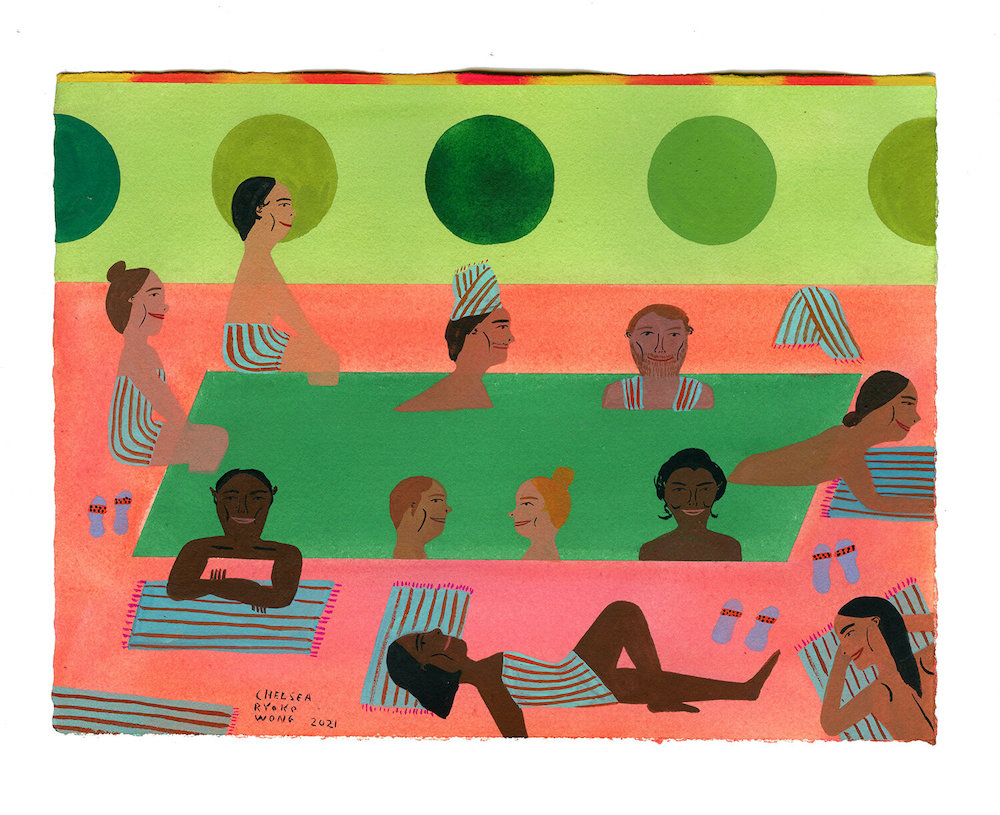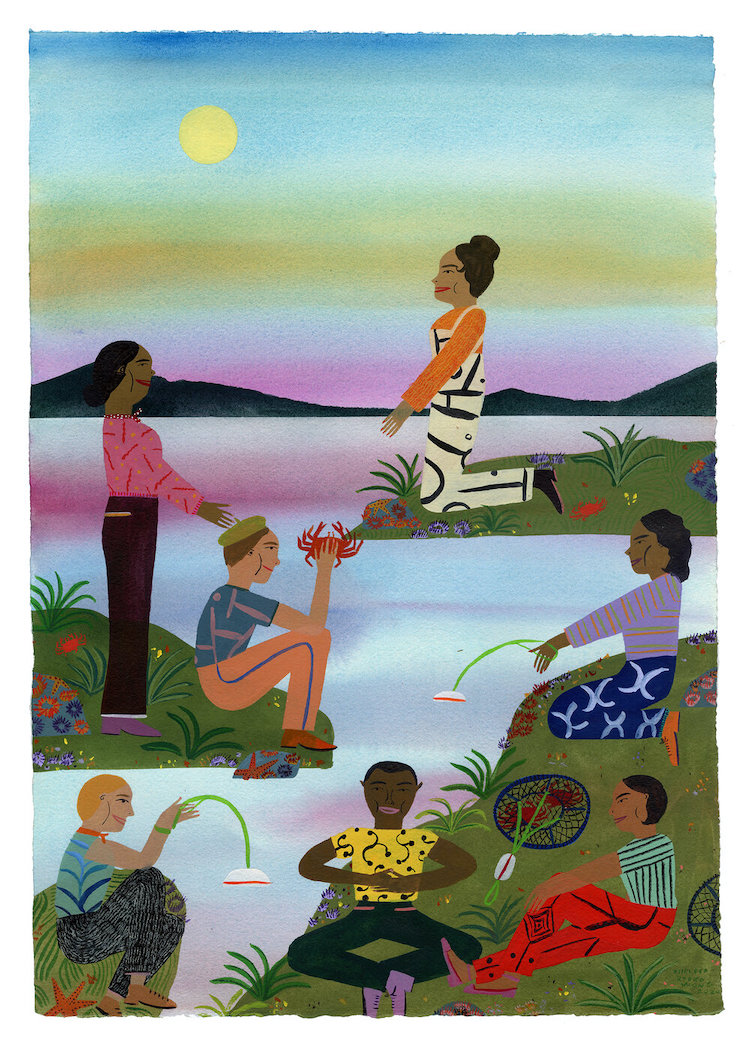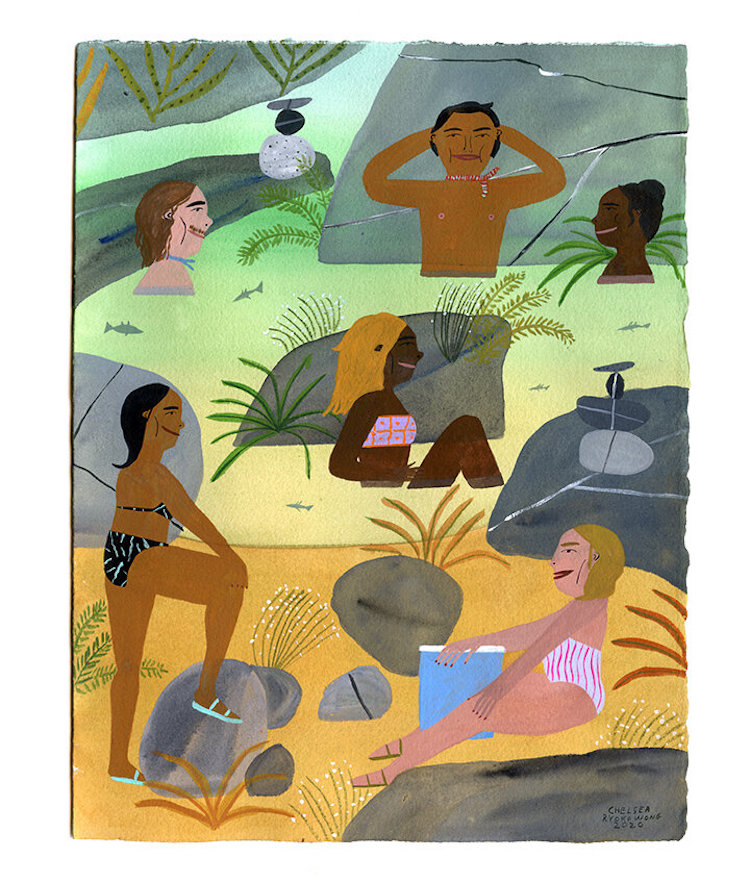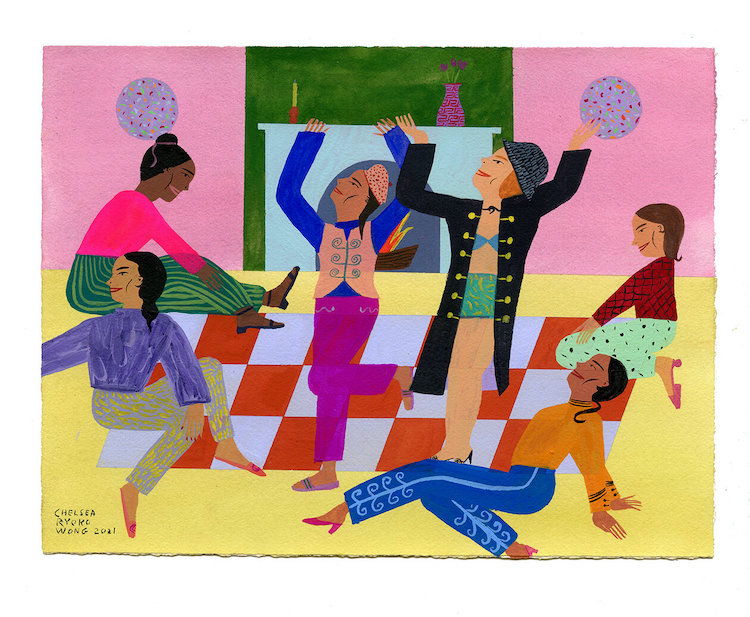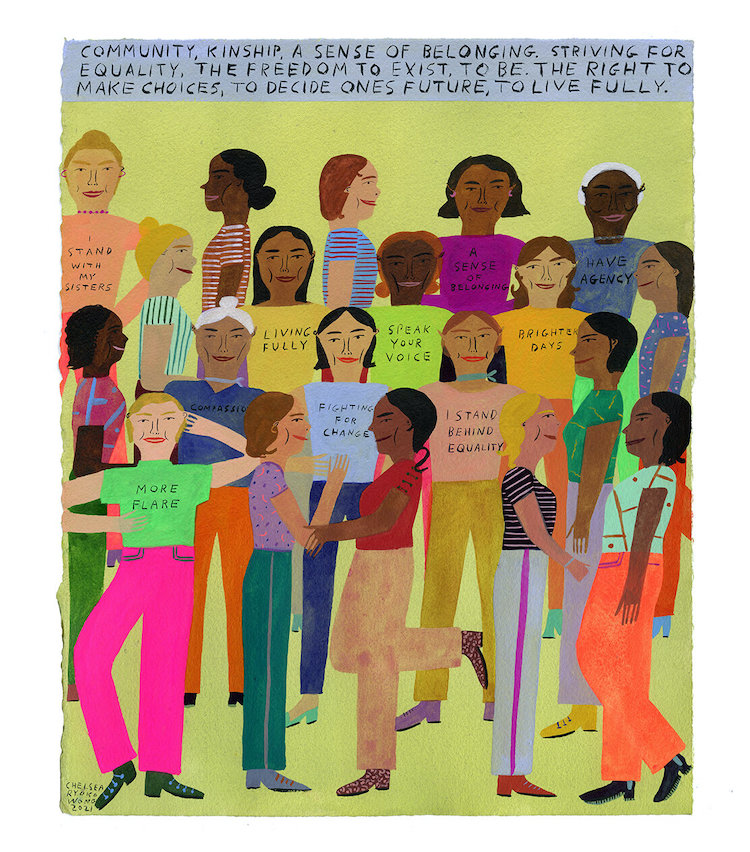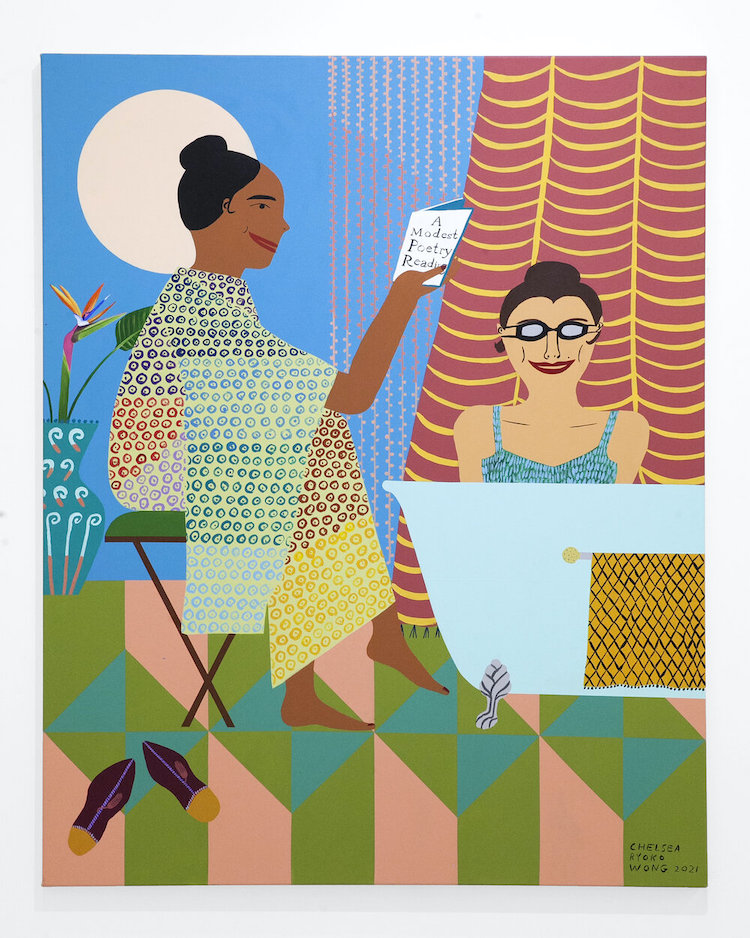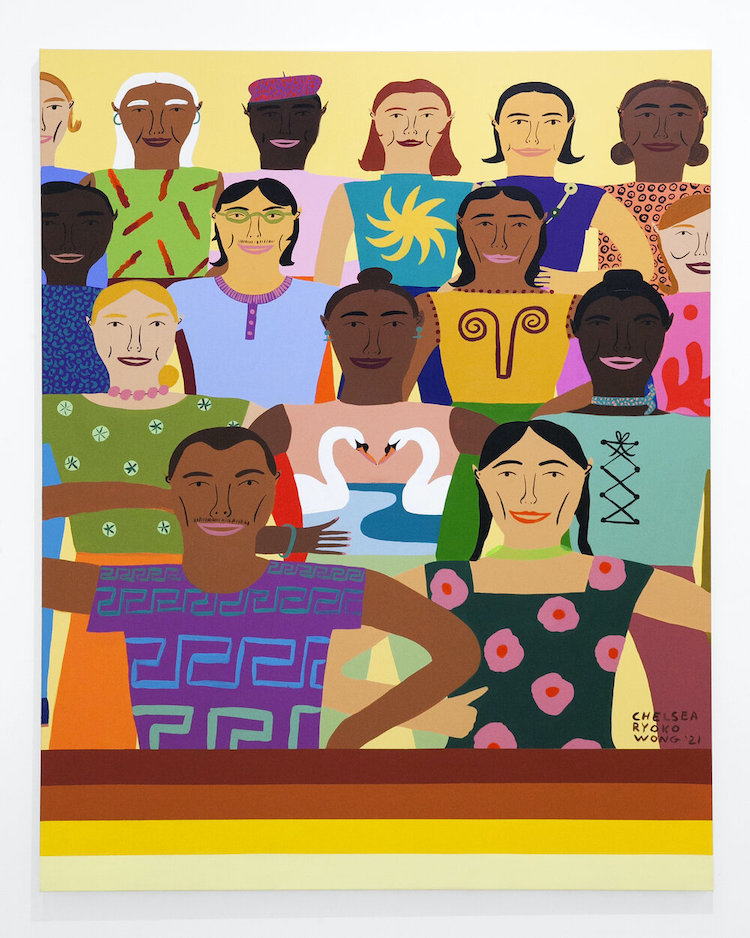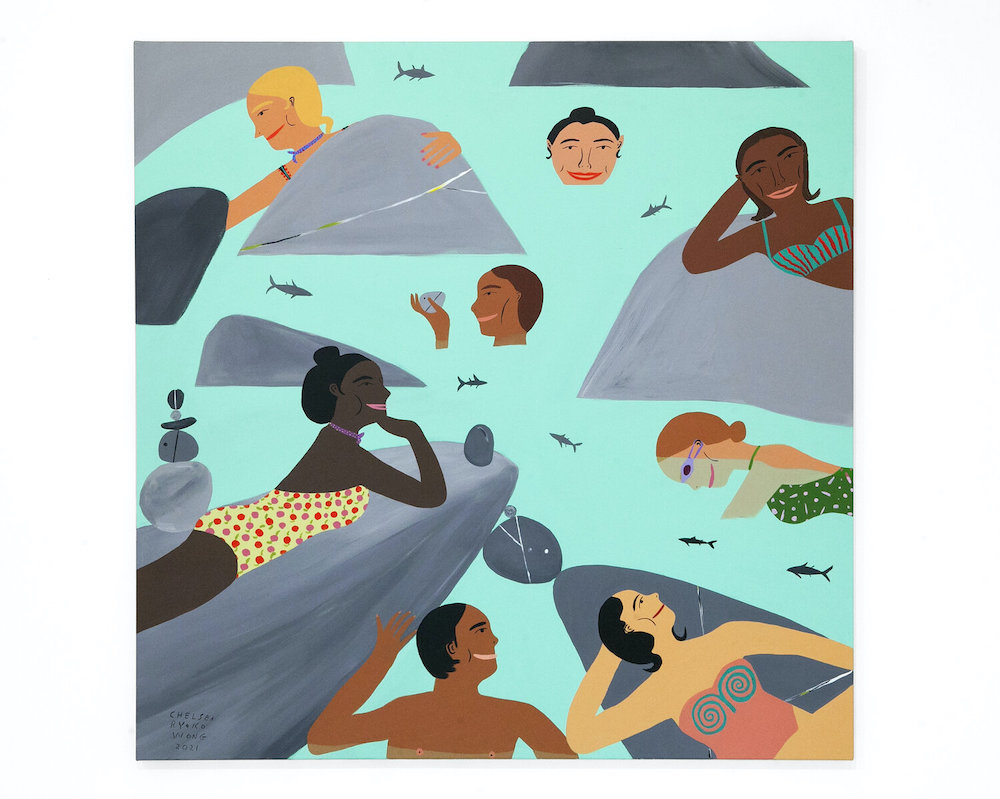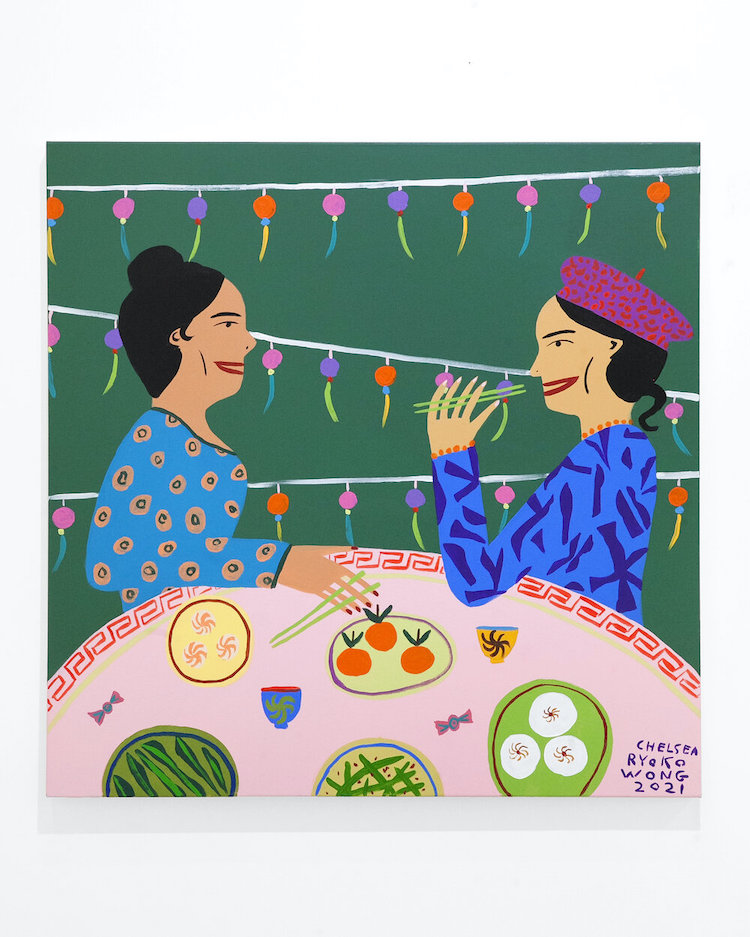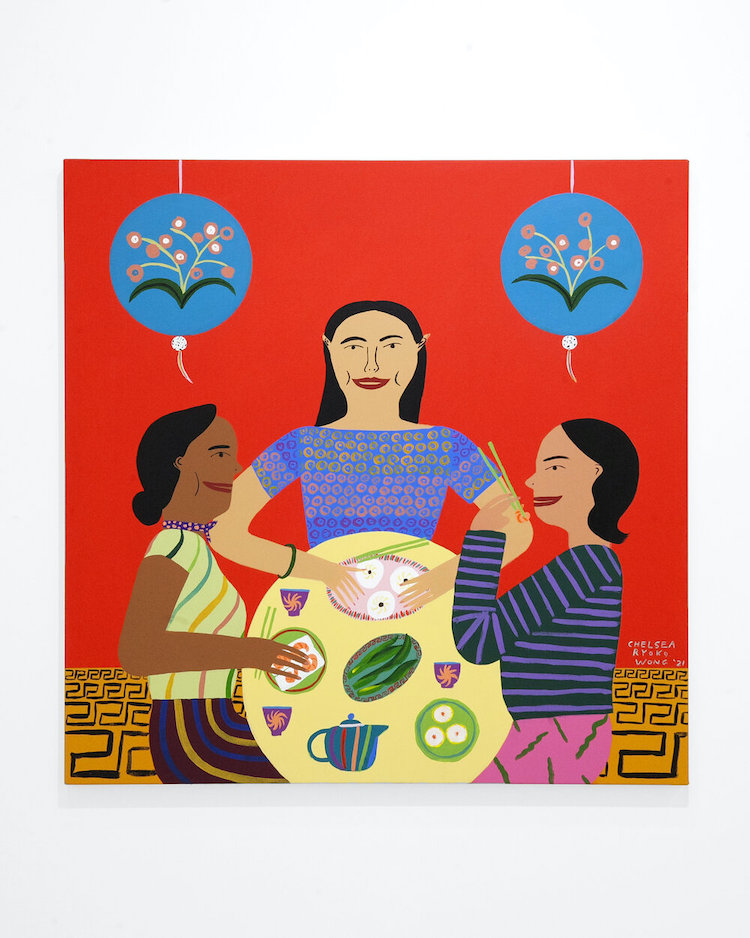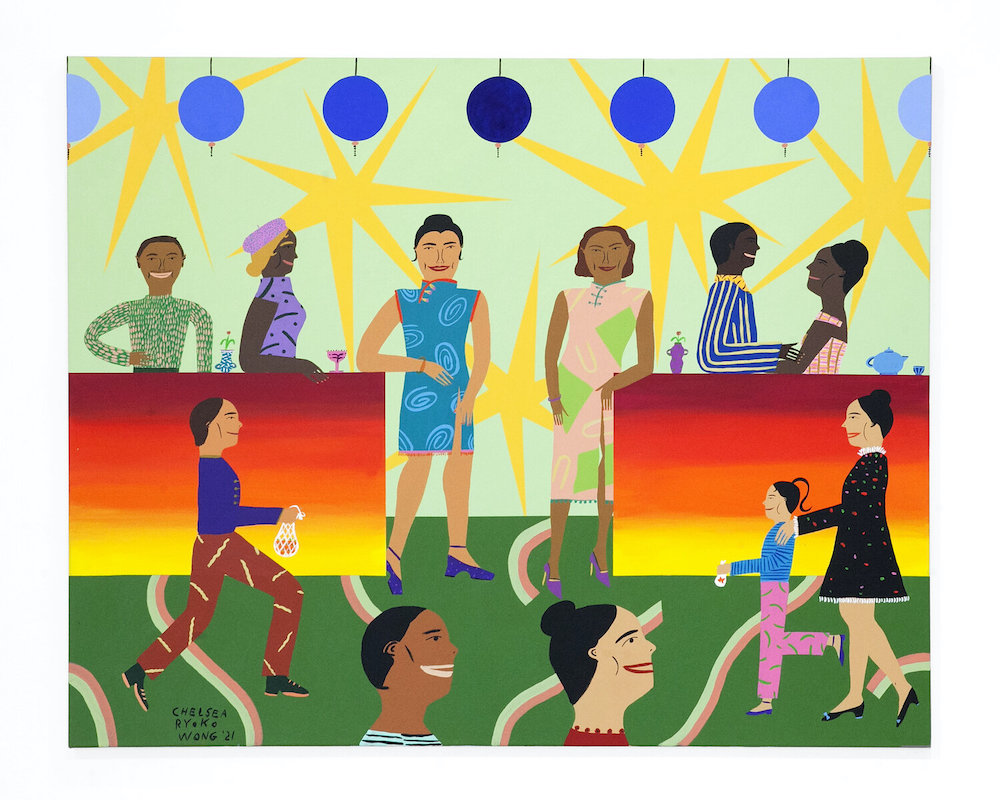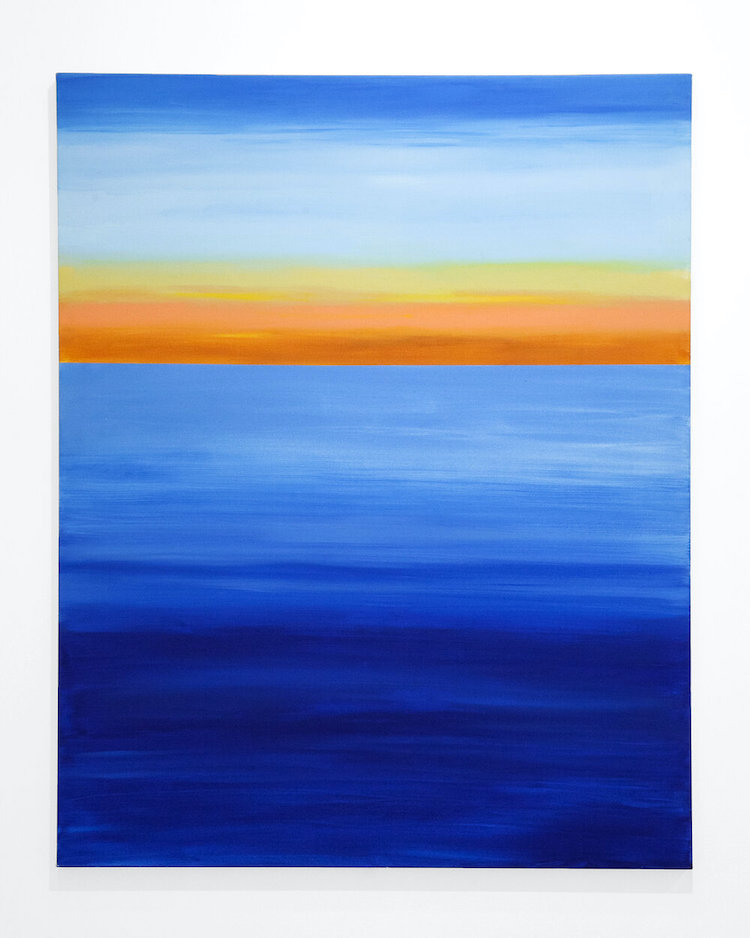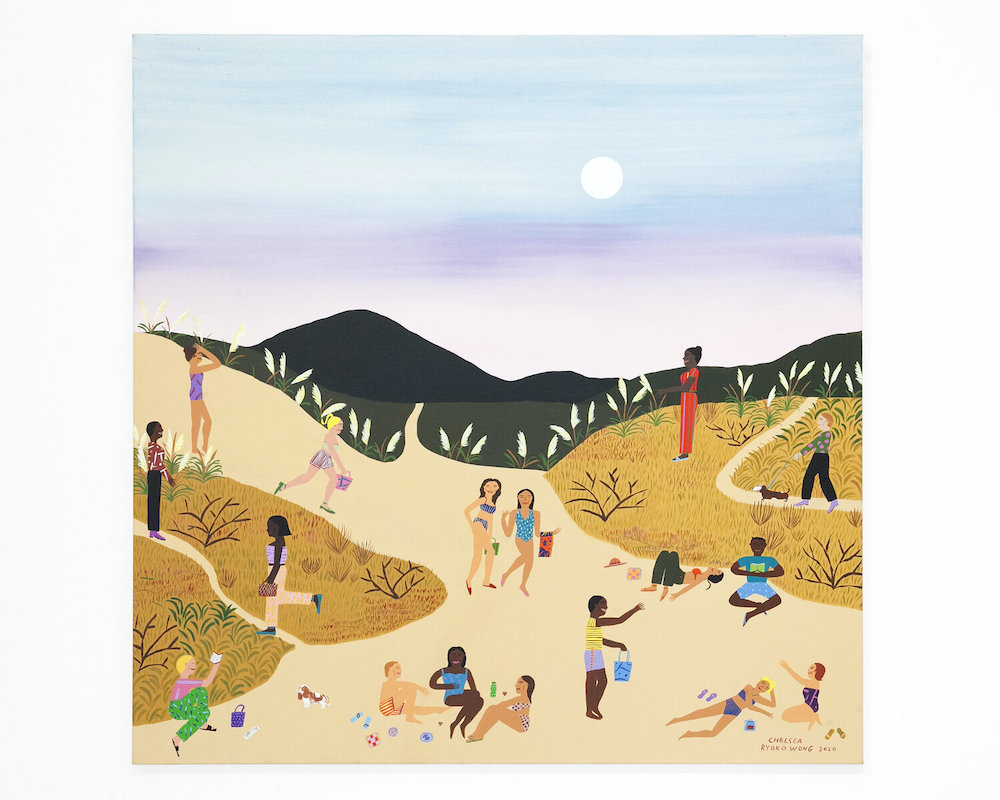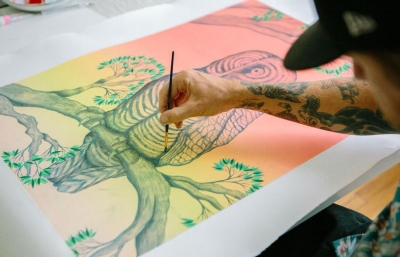pt. 2 Gallery is pleased to announce Poetry, After All, a solo exhibition of new paintings by San Francisco based artist Chelsea Ryoko Wong. For her first exhibition with the gallery, Wong presents scenes of social interaction and peaceful meditation through the use of vivid colors and layered compositions.
At the onset of the pandemic, Wong’s world was turned upside down. The artist, a fervently social being, found her world limited to her studio, her home, and her outdoor surroundings. As such, the people in her latest paintings occupy space in an entirely new manner. The body of work presented in Poetry, After All points to an evolution in composition for Wong, one that emphasizes landscape and interior space.
In the painting Work All Day, Warm Beach at Night small groups of people rest scattered across a beach, an homage to the coastlines of San Francisco and Marin. Nestled in small groups across the sand, figures sit playfully amongst themselves enjoying the apparent warmth of a brilliant sunset. These small groups of people represent a social shift in Wong’s life, the openness of the outdoors paradoxically becoming the safest venue even for the most intimate of friends. As such, the bodies occupy drastically less space than Wong’s most well-known paintings, where closely knit people overlap and dance while occupying most of the picture plane. In Work All Day, Warm Beach at Night, the horizon splits the composition- the figures limited to the beach itself on the lower half of the canvas; the upper half, a blue to purple ombre accented by a moonrise. This divide hints at an extended exploration of space in Wong’s painting, both in the embrace of negative space and the acceptance of linear perspective.
Looking at a more intimate work, the painting A Modest Poetry Reading presents an even greater shift for Wong, both in the dynamics between the subjects and in perspective and scale. Painted on a large canvas, two figures sit. The woman on the left sits in profile, reading to a woman facing forward, wearing goggles in a bathtub. Pushed to the front of the picture plane and displayed on top of a myriad of color and patterns, the two sitters could easily be understood to occupy different planes, if not for the interaction between them. The double portrait is a new subject for Wong, diverting the viewer’s attention to the individual rather than the collective. In rendering her subjects in such a new manner, Wong looks to art history for inspiration - utilizing David Hockney’s understanding of intimacy in double portraits and Joan Brown’s use of space and geometry in relation to portraiture The bather’s homage to Joan Brown’s work is evident, soaking in a swimsuit and goggles.
Across Wong’s paintings, whether densely populated or sparse, a utopic sense of joy and acceptance emanates from her work. People of every imaginable background mix and mingle creating joyful scenarios devoid of prejudice or exclusion. Wong presents worlds that exist between the imaginary and real, a magical place that could be, not too far from reality.

